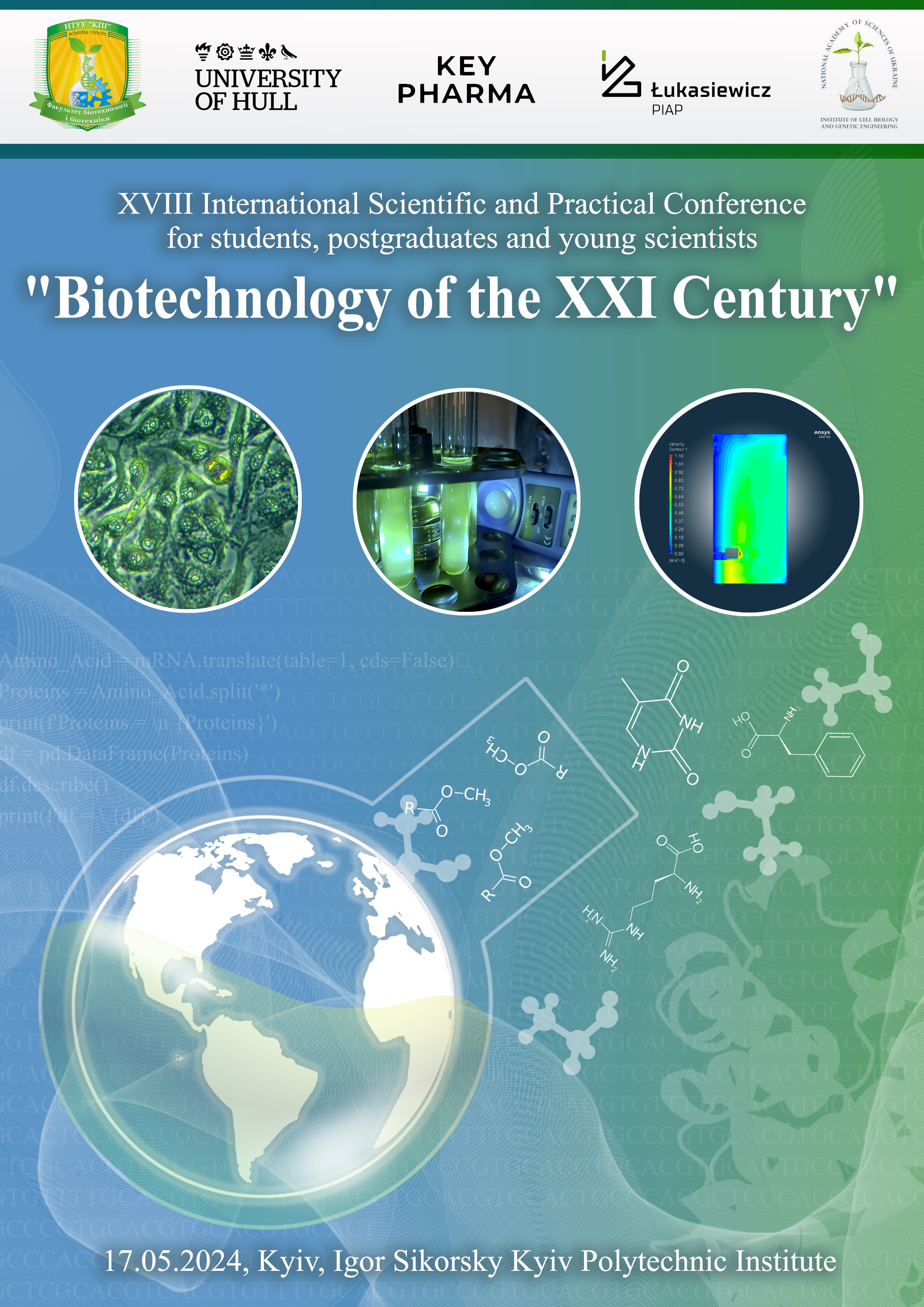КВАНТОВО-ХІМІЧНІ РОЗРАХУНКИ АНТИОКСИДАНТНИХ МЕХАНІЗМІВ 2.3-ДИГІДРОКСИ-6-МЕТИЛ-(4Н)-ПІРАН-4-ОНУ – МЕТАБОЛІТУ БАКТЕРІЙ РОДУ BACILLUS
Ключові слова:
quantum chemical calculations, 3-dihydro-3,5-dihydroxy-6-methyl-(4H)-pyran-4-one antioxidant and antiradical propertiesАнотація
Quantum chemical analysis of the antioxidant and antiradical properties was performed for the optimized structures of the 2,3-dihydro-3,5-dihydroxy-6-methyl-(4H)-pyran-4-one (DDMP). The determined indicators of the course of antioxidant mechanisms showed that the dominant mechanisms for DDMP are SET (Single electron transfer) and SET-PT (Single-Electron Transfer followed by Proton Transfer, SET-PT), and DDMP is a member of the group of medium-strength antioxidants.
Посилання
Sigler K., Chaloupka J., Brozmanova J., Stadler N., Höfer M. Oxidative stress in microorganisms – I. Microbial vs. higher cells – damage and defenses in relation to cell aging and death. Folia microbial. 1999. Vol. 44, № 6. P. 587-624. https://doi.org/10.1007/BF02825650
Abhinandan K, Skori L, Stanic M, Hickerson N, Jamshed M, Samuel M. A. Abiotic stress signaling in wheat–an inclusive overview of hormonal interactions during abiotic stress responses in wheat. Frontiers in Plant Science. 2018; 9(734):1–25. https://doi.org/10.3389/fpls.2018.00734
Рой А.О., Пасічник Л. А, Церковняк Л.С. Вплив бактерій роду Bacillus на збудника бактеріального рака томатів. Мікробіол. журн. 2012; 74(5):74–80.
Yu X, Zhao M, Liu F, Zeng S, Hu J. Identification of 2,3-dihydro-3,5-dihydroxy-6-methyl-4H-pyran-4-one as a strong antioxidant in glucose–histidine. Maillard reaction products. Food Res Int. 2013; 51:397–403. https://doi.org/10.1016/j.foodres.2012.12.044
Ban JO, Hwang IG, Kim TM, Hwang BY, Lee US, Jeong HS, Yoon YW, Kim DJ, Hong JT. Anti-proliferate and pro-apoptotic effects of 2,3-dihydro-3,5-dihydroxy6-methyl-4H-pyranone through inactivation of NF-κB in human colon cancer cells. Arch Pharm Res. 2007; 30:1455–1463. https://doi.org/10.1007/BF02977371
Frisch M. J, Trucks G. W, Schlegel H. B, et.al, Gaussian 09, Revision A.02. Gaussian Inc., Wallingford, CT 2009.
Lee C, Yang R. G, Parr W. Development of the Colle-Salvetti correlation energy formula into a functional of the electron density. Physical Review. 1988; 37(2):785–789. https://doi.org/10.1103/PhysRevB. 37.785
Mikulski D, Eder K, Molski M. Quantum-Chemical study on relationship between structure and antioxidant properties of hepatoprotective compounds occurring in Cynara Scolymus and Silybum Marianum. Journal of Theoretical and Computational Chemistry. 2014; 13(1):1–24. https://doi.org/10.1142/S0219633614500047
Wright J. S, Johnson E. R, DiLabio G. A. Predicting the activity of phenolic antioxidants: theoretical method, analysis of substituent effects, and application to major families of antioxidants. Chem. Soc. 2001; 123(6):1173–1183. https://doi.org/10.1021/ja002455u
Klein E, Rimarcik J, Lukes V. DFT/B3LYP study of the O-H bond dissociation enthalpies and proton affinities of para-and meta-substituted phenols in water and benzene. Acta Chim. Slovaca. 2009; 2(2):37–51. https://doi.org/ 10.1016/j.theochem.2006.04.017
Bartness J. E. Thermodynamics of the electron and the proton. J. Phys. Chem. 1994; 96:6420–6424. https://doi.org/10.1021/j100076a029
Milena M. V, Verena S. L, Mario R. M. Bioactive compounds. Phenolic compounds: structure, classification, and antioxidant power. 2019; 2:40.
Urbaniak A, Molski M, Szelag M. Quantum-chemical calculations of the antioxidant properties of trans-p-coumaric acid and trans-sinapinic acid. Computational Methods in Science and Technology. 2012; 18(2):1–112. https://doi.org/10.12921/cmst.2012.18.02.117-128
Sebastian S, Sundaraganesan N, Manoharan S. Molecular structure, spectroscopic studies and first-order molecular hyperpolarizabilities of ferulic acid by density functional study. Spectrochimica Acta Part A: Molecular and Biomolecular Spectroscopy. 2009; 74:312–323. https://doi.org/10.1016/j.saa.2009.06.011
Lee C. Y, Sharma A, Semenya J, Anamoah C, Chapman K. N, Barone V. Computational study of Ortho-Substituent effects on antioxidant activities of phenolic dendritic antioxidants. Antioxidants (Basel). 2020; 9(3):189. https://doi.org/10.3390/antiox9030189
Chen Y, Xiao H, Zheng J, Liang G. Structure-thermodynamics-antioxidant activity relationships of selected natural phenolic acids and derivatives: an experimental and theoretical evaluation. Plos One. 2015; 10(3):1–20. https://doi.org/10.1371/journal.pone.0121276

